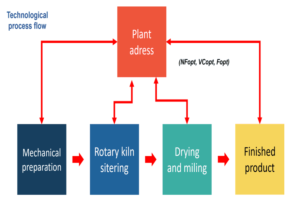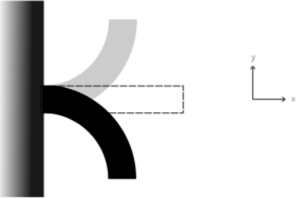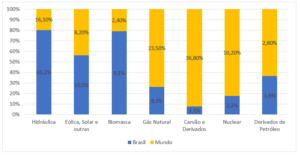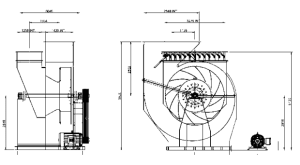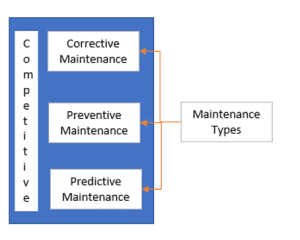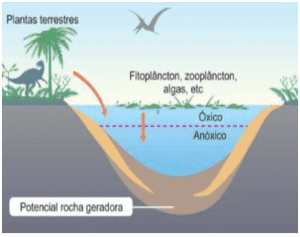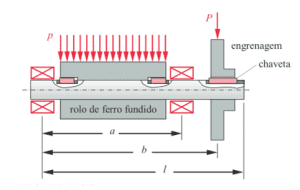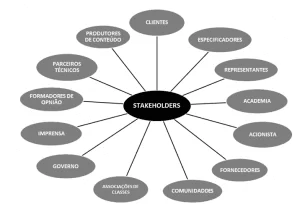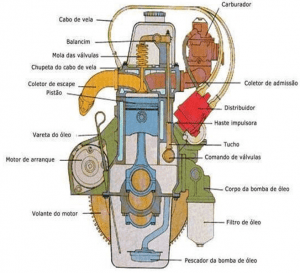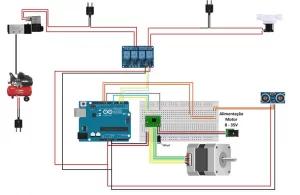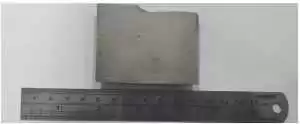ORIGINAL ARTICLE
PINHEIRO, Samuel Junio França [1]
PINHEIRO, Samuel Junio França. Study on elasticity and plasticity of automotive head screws. Revista Científica Multidisciplinar Núcleo do Conhecimento. Year 05, Ed. 06, Vol. 02, pp. 149-169. June 2020. ISSN: 2448-0959, Link de acesso: https://www.nucleodoconhecimento.com.br/engineering-mechanical-engineering/elasticity-and-plasticity
SUMMARY
The screws must maintain the tightening forces applied, however, after torque and the load cycle, an elongation occurs in its structure. The efficiency of such a component is vital for the perfect fit and operation of the engine. In this work, we propose a comparison between the real deformations and those obtained from the computational simulation of the head screws, taken from gasoline and diesel engines. The screws used in the experiment will be of drive and utility heads of four different brands: Pallium 1.6 16v, Marea 2.0, Zafira 2.0 and Pajero 2.8 Diesel.
Keywords: Screws, traction, deformation, calculations, head.
1. INTRODUCTION
The Greek Archytas de Tarentum was responsible for the development of the screw around 400 BC. At the time, it was developed to be used in presses for olive oil extraction, as well as in wine production. The history of the screw, in its multiple versions, points out that Archimedes, around 250 BC, developed the principle of thread, using it for the construction of devices for the transport of water in irrigation. The first document printed on screws appears in a book from the early fifteenth century, but metal screws only appeared in Europe from the year 1400 and Johann Gutenberg included these components among the fasteners of his printer (Screw Magazine).
It is noted that, throughout history, the screw was always a solution to endless problems, and, of course, generated others, because they were made by different inventors and there were no norms and standards. Due to this need, the standardizations were created, thus obtaining results that made its application universal. According to Norton (2011), the screw present in a project may seem one of its less interesting aspects, but it is actually one of the most fascinating. Thus, thousands of different joint designs are offered by vendors, which in turn are used in complex assemblies, such as an automobile or airplane.
2. METHODOLOGY
The work consists of structural analysis of bolt samples taken from combustion engine heads analogous to the Otto and Diesel cycle, comparing with new screws and analyzing the deformation suffered after the torque required by the manufacturer (SILVEIRA, 2008; FERNANDEZ, 2006; ARAÚJO, 2007). In possession of the screws, their metallic composition was defined based on their mechanical properties, measurements and calculations of stresses to which they were submitted, and after that, the parameters obtained for computational simulation will be applied using the SolidWorks20 software19. The following tools were used to carry out the experiment:
- Caliper;
- Software SolidWorks 2019;
- Traction test machine GUNT WP 300.20 TENSILE TEST;
- Hooke’s Law Formula for Deformation
Hooke’s Law was used in calculations to determine strength from deformation. The law determines the deformation suffered by an elastic body through a force (LABURU; ALMEIDA, 1998; MASCIA, 2006). The formula used corresponds to equation 1.
Where:
δ- part elongation in [m] F – rated load applied [N]
E – modulo of elasticity [Pa] A – cross section area [m2]
L0 – initial length of part Lf – final length
The motor head screws for the following cars were analyzed, as shown in Table 1:
Table 1: Vehicle/Bolt Ratio
| Vehicle | Quant. Screws |
| Fiat Marea 2.0 (1st engine) | 2 |
| Fiat Marea 2.0 (2nd engine) | 12 |
| FIAT Palio 1.6 | 10 |
| GM Zafira 2.0 | 10 |
| MITSUBISHI Pajero 2.8 Diesel | 22 |
Source: Author (2020)
In order to test the experiment, measurements were made of all screws to know how much the screw was lengthened and after all measurements were made and annotated, a spreadsheet was used and the graph was elaborated with the comparisons necessary to understand how important it is to know the deformation of the screw after the torque exercised. SolidWorks 2019 was then used to compare the results of the experiment.
3. RESULTS AND DISCUSSION
The head screws for combustion engines, in general, have elastic properties and very specific resistance. The screw has an initial tensile strength and a torque supplied predetermined by the manufacturer generates a normal tension in the area of the screw head, and this tension is due to the “initial preload” (part seating) and subsequent angular tightening steps indicated by each manufacturer.
3.1 PRELOAD
The preload is the tightening defined by the manufacturer or assembler made using a tachymeter to intend and seat the head cover (process of low complexity requiring only the adjustment of the tachymeter and its correct use) (LA CAVA et al, 2000; SCHWONBACH et al, 2008)
3.2 ANGULAR GRIP
This process can be sized to use the maximum strength capacity of the screw, that is, the screw deforms in the plastic region without screw failure (COURTES et al, 2017; MONTEIRO, 2016). The chemical composition of the head screw has high “ductibility” (ability to deform before the structure fails). The tightening angle phase is the most precise and its dimensioning is made to exceed the flow in 100% of cases, and, for this reason, it is extracted to the maximum force and smaller dimensions need to be considered in the calculation. The consequence of this is that this method allows smaller screws to be used to have the expected force and keep the joint in operation, as pointed out by Garcia (2008).
3.3 ANALYSIS
The analysis was performed by comparing new screws (measurements provided by the manufacturer) and used screws removed from engines after maintenance. Measurements were performed with caliper, being 14 samples of fiat marea 2.0 head screw, 22 samples of Mitsubishi Pajero 2.8D, 10 samples of Fiat Palio 1.6 and 10 samples of GM Zafira 2.0. It was observed that the screws used had different length of the new screws. We then sought to know the tension applied to each screw to generate the observed deformations. Obtained the linear displacement of each screw and the linear displacement data of each screw. For this experiment, 4340 steel was used as the basis for samples of the Cars Palio, Marea and Pajero, with the elasticity of 210GPa.
For the Zafira car, 6150 steel with the elasticity of 190GPa was used as the base. It was detected that steel 4340, for example, has a yield limit of 460MPa, which is the limit of its tension within the phase of elastic deformation. If the force applied to the screw exceeds the flow limit, i.e. exceeds the force of 460MPa, the screw enters the plastic deformation phase, no longer returning to its original shape. According to the graph in Figure 1, the limit of steel flow, i.e. the 460Mpa, is represented in the “σesc.”, where the elastic phase ends and the plastic phase begins. The maximum tension supported by the body is represented by the “σR” in the plastic phase and then at point “V”, which is the instant the body breaks.
Figure 1: Stress/Strain Chart
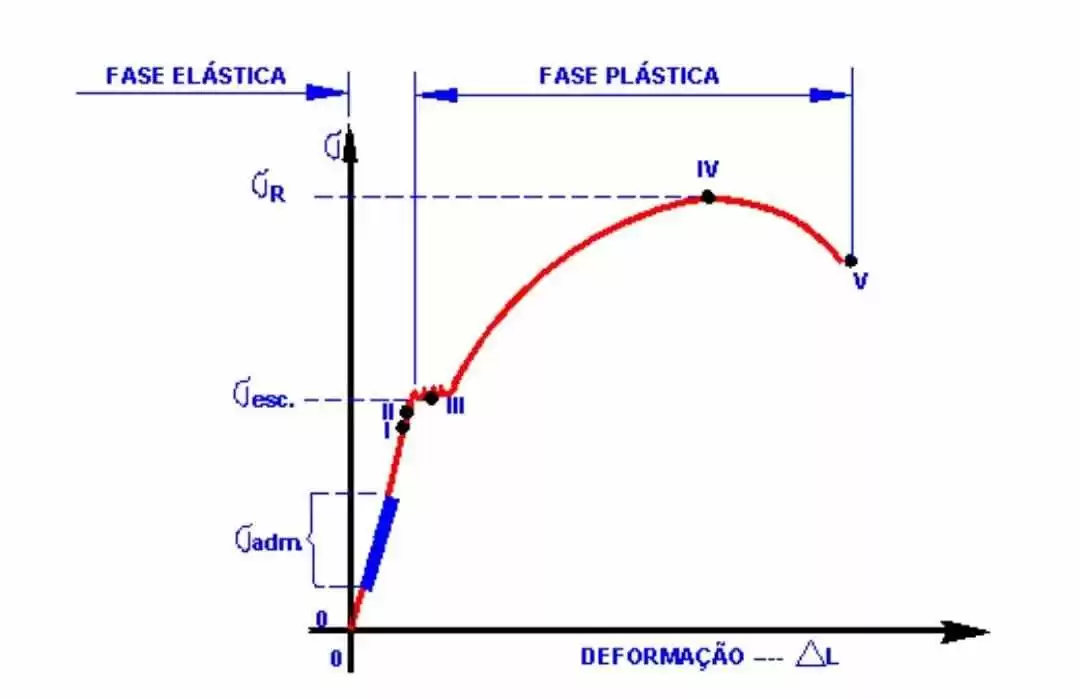
Based on the data collected and the formulas used, the following worksheets were generated by comparing the normal stresses applied to each screw and, consequently, generating the displacement measured in the screws used:
Table 2: Comparative Screws/Marea Lot 1 and 2
| Marea 2.0 car head screws (1st batch) | |||
| Initial Measurement (254mm) | Real Elongation (mm) | Stretching software 2019 SolidWorks (mm) | Differential (%) Real vs SolidWorks |
| P1 | 257,10 | 261,56 | 1,71% |
| P2 | 256,90 | 261,07 | 1,60% |
| Marea 2.0 car head screws (2nd batch) | |||
| Initial Measurement (254mm) | Real Elongation (mm) | Stretching software 2019 SolidWorks (mm) | Original Differential/Software (%) |
| P1 | 255,50 | 257,66 | 0,84% |
| P2 | 255,50 | 257,66 | 0,84% |
| P3 | 255,15 | 256,80 | 0,64% |
| P4 | 255,50 | 257,66 | 0,84% |
| P5 | 255,75 | 258,27 | 0,98% |
| P6 | 255,50 | 257,66 | 0,84% |
| P7 | 255,05 | 256,56 | 0,59% |
| P8 | 255,10 | 256,68 | 0,62% |
| P9 | 255,10 | 256,68 | 0,62% |
| P10 | 255,75 | 258,27 | 0,98% |
| P11 | 255,50 | 257,66 | 0,84% |
| P12 | 255,50 | 257,66 | 0,84% |
Source: Author (2020)
Table 3: Comparative Screws/Pajero
| Pajero 2.8 Car Head Screws | |||
| Initial Measure
P1 to P4 (104mm) P5 to P8 (125mm) P9 to P22 (106mm) |
Real Elongation (mm) | Stretching software 2019 SolidWorks (mm) | Original Differential/Software (%) |
| P1 Flat Head | 104,80 | 104,93 | 0,12% |
| P2 Flat Head | 104,71 | 104,83 | 0,11% |
| P3 Flat Head | 104,65 | 104,76 | 0,11% |
| P4 Flat Head | 104,85 | 104,99 | 0,13% |
| P5 Striated Head | 125,55 | 126,00 | 0,36% |
| P6 Striated Head | 126,35 | 127,74 | 1,09% |
| P7 Striated Head | 125,95 | 126,72 | 0,61% |
| P8 Striated Head | 126,10 | 127,00 | 0,71% |
| P9 Striated Head | 106,10 | 106,87 | 0,72% |
| P10 Striated Head | 106,10 | 106,87 | 0,72% |
| P11 Striated Head | 106,10 | 106,87 | 0,72% |
| P12 Striated Head | 107,30 | 108,92 | 1,49% |
| P13 Striated Head | 106,10 | 106,87 | 0,72% |
| P14 Striated Head | 106,90 | 108,24 | 1,24% |
| P15 Striated Head | 105,55 | 105,93 | 0,36% |
| P16 Striated Head | 105,55 | 105,93 | 0,36% |
| P17 Striated Head | 106,45 | 107,47 | 0,95% |
| P18 Striated Head | 105,90 | 106,53 | 0,59% |
| P19 Striated Head | 106,85 | 108,15 | 1,20% |
| P19 Striated Head | 106,10 | 106,87 | 0,72% |
| P20 Striated Head | 106,80 | 108,07 | 1,18% |
| P21 Striated Head | 106,30 | 107,21 | 0,85% |
| P22 Striated Head | 109,59 | 110,35 | 0,69% |
Source: Author (2020)
Table 4: Comparative Screws/Zafira
| Zafira 2.0 car head screws | |||
| Initial Measurement (136mm) | Real Elongation (mm) | Stretching software 2019 SolidWorks (mm) | Original Differential/Software (%) |
| P1 | 137,00 | 139,08 | 1,50% |
| P2 | 136,90 | 138,78 | 1,35% |
| P3 | 136,80 | 138,47 | 1,21% |
| P4 | 136,90 | 138,78 | 1,35% |
| P5 | 137,00 | 139,08 | 1,50% |
| P6 | 136,90 | 138,78 | 1,35% |
| P7 | 136,90 | 138,78 | 1,35% |
| P8 | 136,70 | 138,16 | 1,06% |
| P9 | 136,80 | 138,47 | 1,21% |
| P10 | 136,80 | 138,47 | 1,21% |
Source: Author (2020)
Table 5: Comparative Screws/Palio
| Car head screws Palio 1.6 | |||
| Initial Measurement 100mm | Real Elongation (mm) | Stretching software 2019 SolidWorks (mm) | Original Differential/Software (%) |
| P1 | 100,99 | 101,16 | 0,17% |
| P2 | 100,99 | 101,16 | 0,17% |
| P3 | 100,75 | 100,87 | 0,12% |
| P4 | 100,75 | 100,87 | 0,12% |
| P5 | 100,99 | 101,16 | 0,17% |
| P6 | 100,99 | 101,16 | 0,17% |
| P7 | 101,00 | 101,17 | 0,17% |
| P8 | 101,00 | 101,17 | 0,17% |
| P9 | 100,99 | 101,16 | 0,17% |
| P10 | 100,99 | 101,16 | 0,17% |
Source: Author (2020)
In the first experiment done on the screws of the marea car head, an average tension of 508KPa was found to which the screws were requested during the torque application, with the average displacement of 3mm occurring in the screw. In graph 1, you have the stresses of the first experiment.
Graph 1: Marea 2.0 head screws (1st motor)
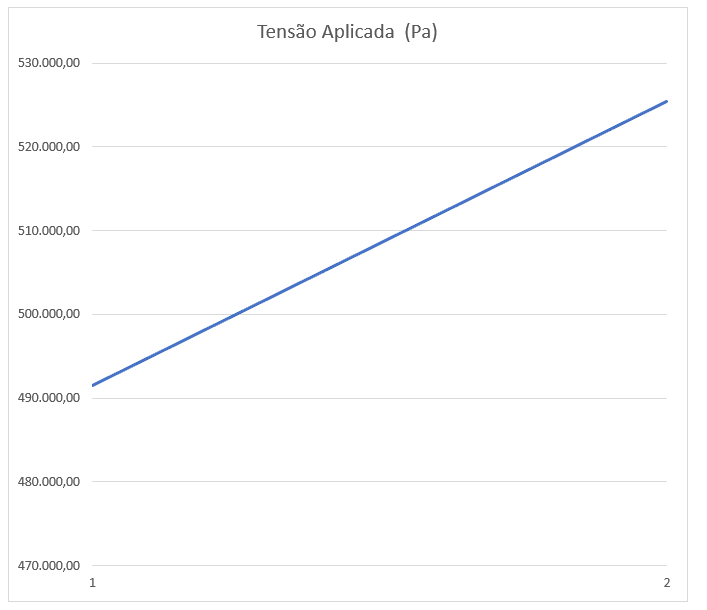
Figure 2: Screw Marea Type 1 SolidWorks 2019
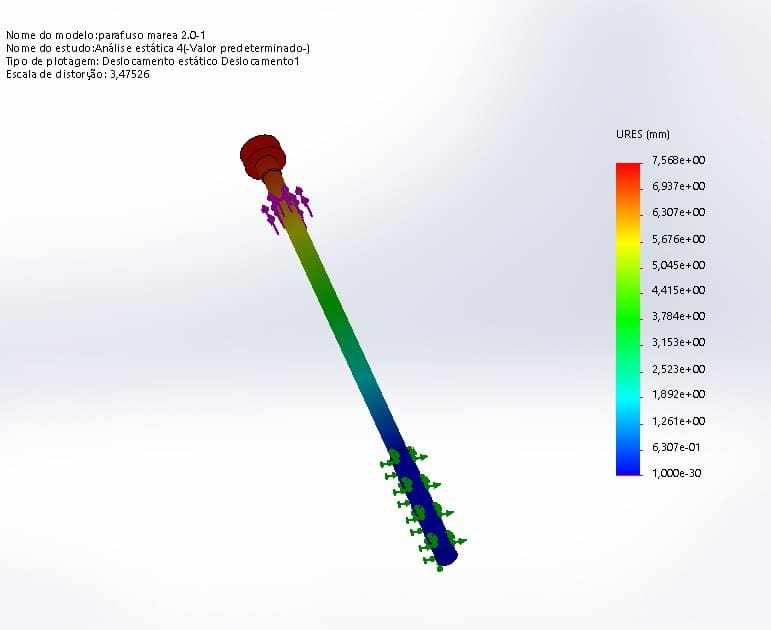
[/caption]
In the second experiment, the same model was used, but the tension found was 54.73% lower compared to the first experiment, and thus the mean tension found was 239KPa, to which the screws were requested during torque application and, consequently, the mean displacement of 1.41mm occurred in the screw. Graph 2 depicts the stresses of the second design.
Graph 2: Marea 2.0 head screws (2nd engine)
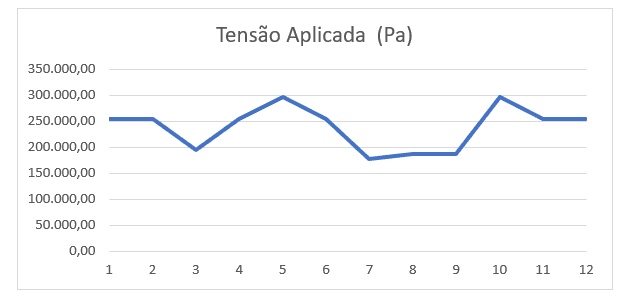
[/caption]
Figure 3: Screw Marea Type 2 SolidWorks 2019
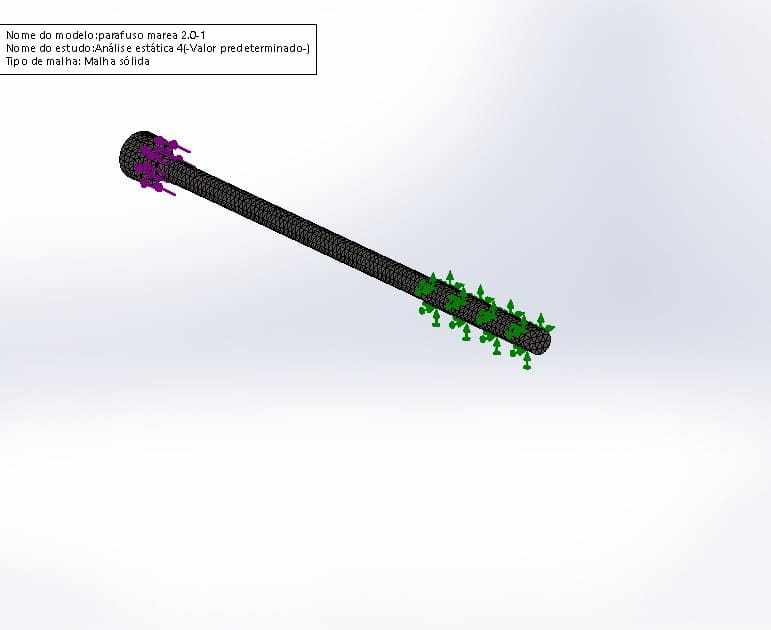
[/caption]
In the third experiment, the head used was from Pajero and in it we found 3 types of screws, and thus, 3 different graphs were made. The mean tension found for the type 1 screw was 240KPa, as shown in graph 3, with a mean displacement of 0.85 mm.
Graph 3: Pajero 2.8 Head Screws – Type 1
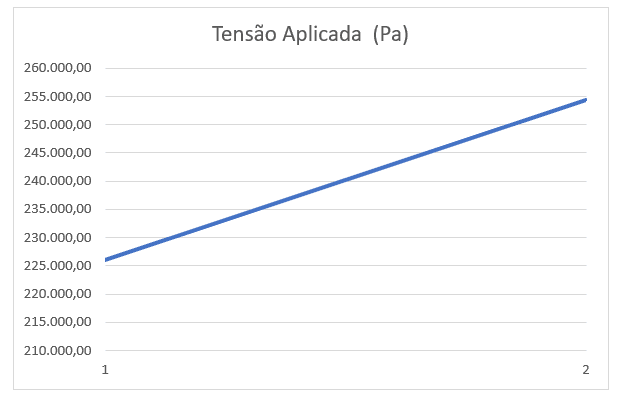
[/caption]
Figure 4: Screw Marea Type 1 SolidWorks 2019
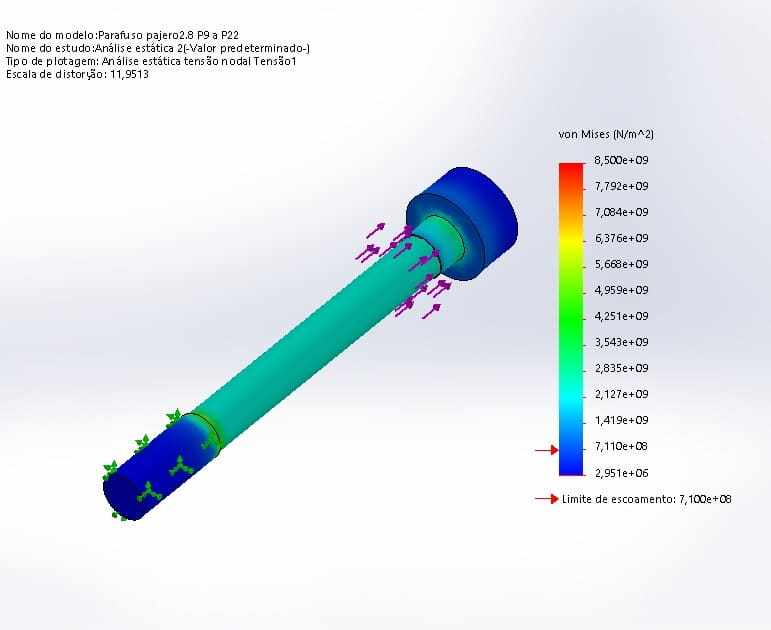
[/caption]
In pajero type 2 screw the average voltage found was 433KPa. This average is according to graph 4 and has an average displacement of 0.99 mm.
Graph 4: Pajero 2.8 Head Screws – Type 2
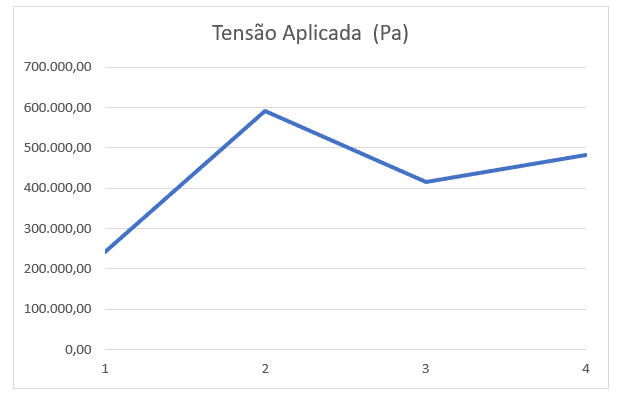
[/caption]
Figure 5: Pajero Screw Type 2 – SolidWorks 2019
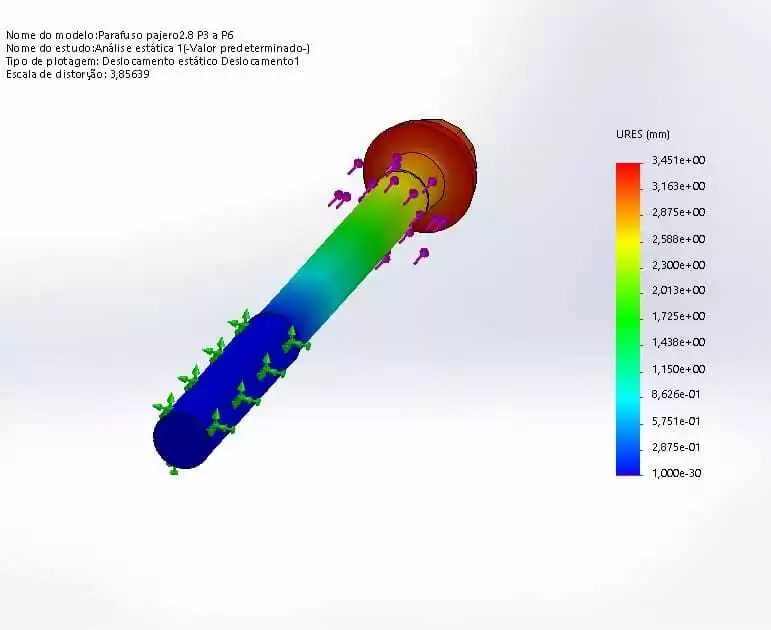
[/caption]
In the third model of the Pajero, the voltage of 705KPa was found, as shown in graph 5, and thus a mean displacement of 1.29 mm was obtained. Thus, the third experiment is finalized.
Graph 5: Pajero 2.8 Head Screws – Type 3
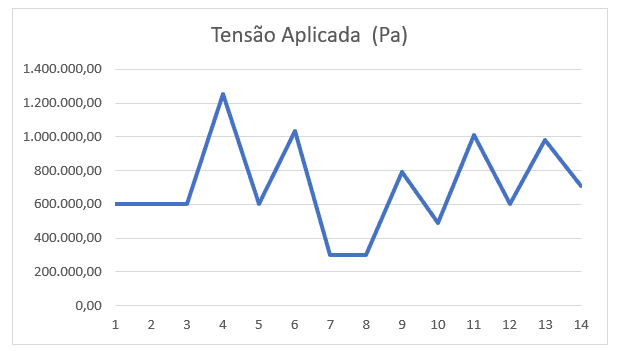
[/caption]
Figure 6: Pajero Screw Type 3 – SolidWorks 2019
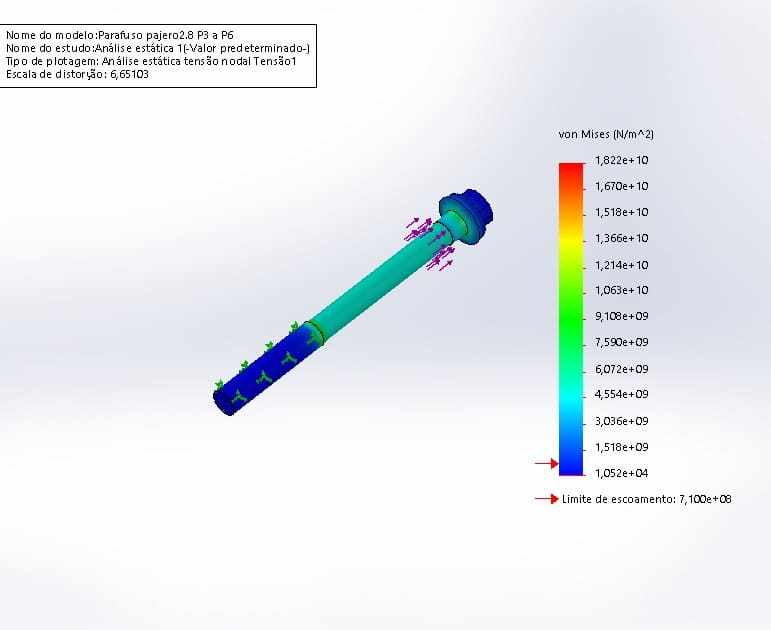
[/caption]
For the fourth experiment we used the zafira car head, and thus the mean tension found was 477KPa, as shown in graph 6, thus showing an average plastic deformation of 0.87 mm.
Graph 6: Zafira 2.0 Head Screws
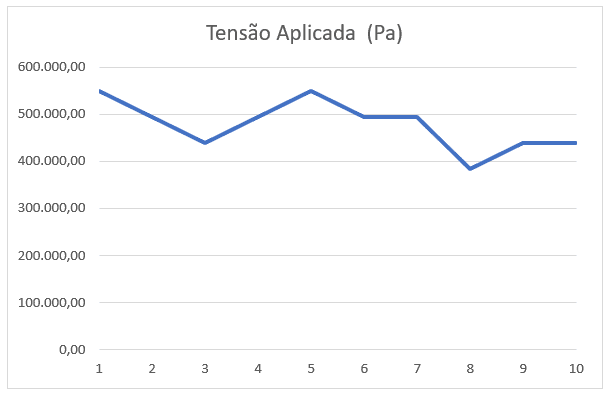
[/caption]
Figure 7: Zafira Screw – SolidWorks 2019
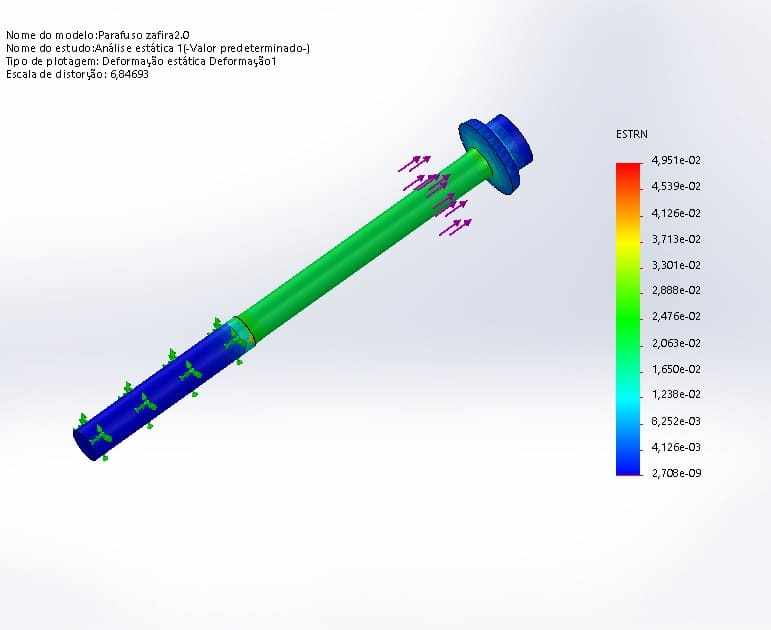
[/caption]
Observing the fifth and last experiment done on the head of the Palio car, the mean tension found was 667KPa, as illustrated in graph 7, and thus an average displacement of 0.94 mm was obtained.
Graph 7: Palio 1.6 Head Screws
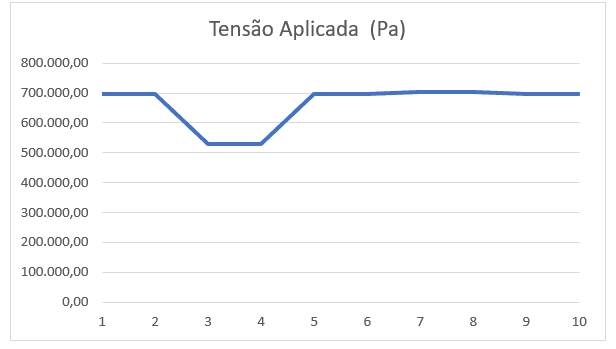
[/caption]
Figure 8: Palio Screw – SolidWorks 2019
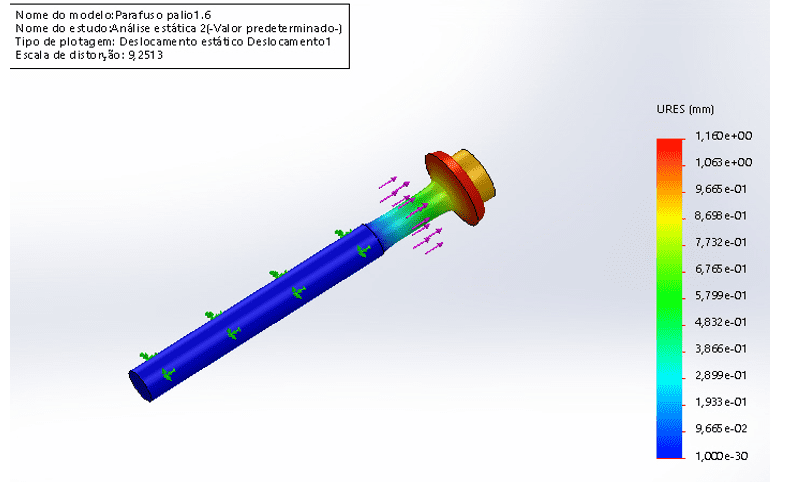
[/caption]
3.4 TENSILE TEST
In a tensile test the specimen is subsent to opposing forces at its ends until its rupture (CAMPOS; LAHR, 2004; FIORESE et al, 2015).
3.5 SPECIMEN
The specimen is a sample of the material and has cylindrical shape. Standards from the American Society for Testing and Materials – ASTM, Deutsches Institut für Normung – DIN and the Brazilian Association of Technical Standards -ABNT are used for standardization and comparison of results. A sample of a new pajero 2.8 diesel screw screw of the pajero vehicle was used in the test.
Figure 9: schematic representation of a specimen before undergoing the tensile test
P = gallows
So = fracture region
lo = useful length
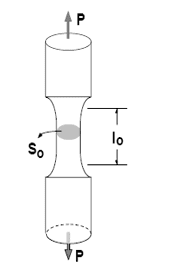
[/caption]
Tensile test parameters
Body of Proof Averages
d = diameter
lo =30mm
d = 4mm
Figure 10: Sample made of material, screw new pajero 2.8 diesel head
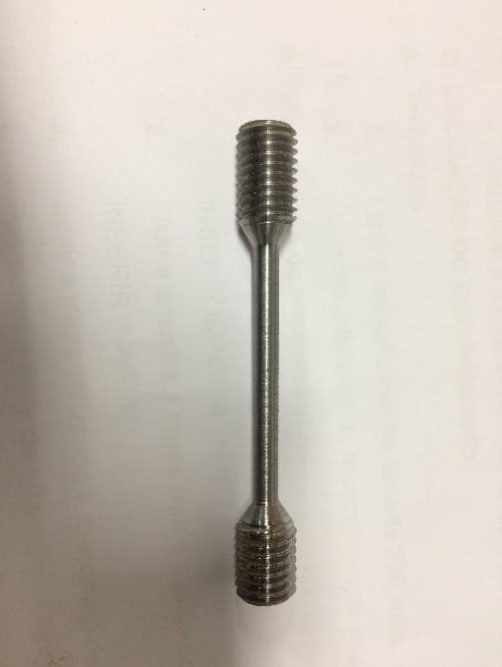
[/caption]
Figure 11: Material breakage
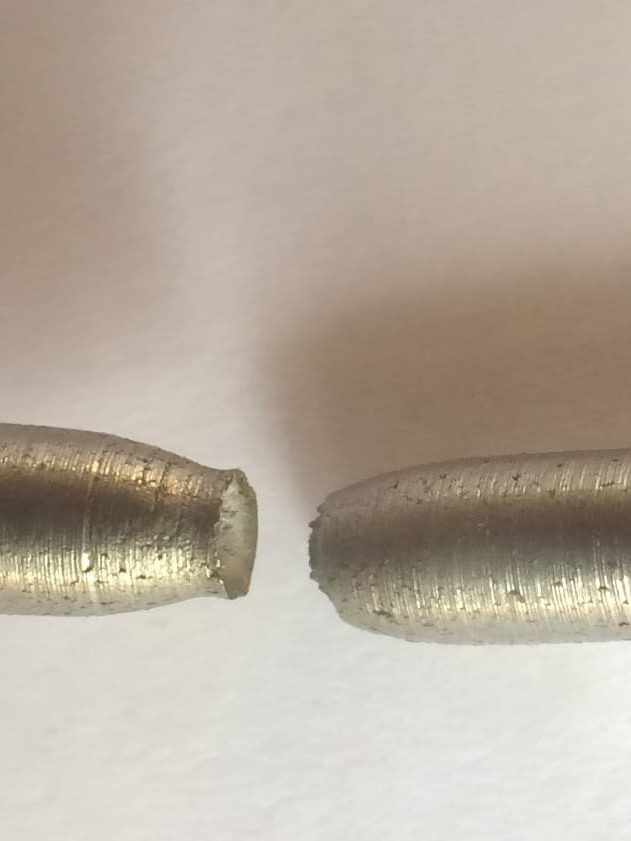
[/caption]
Figure 12: Pajero car stress/strain graph 2.8
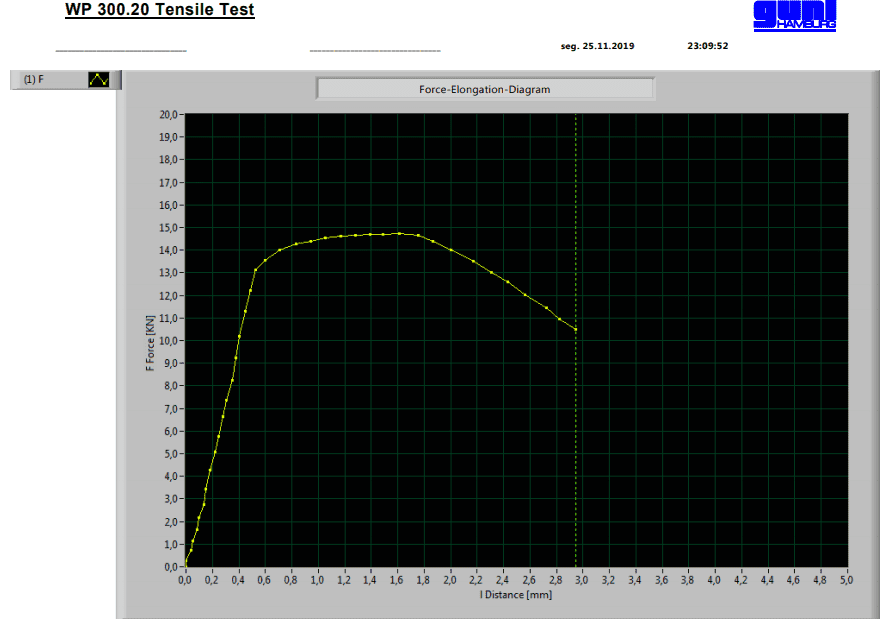
[/caption]
Graph 7: Manual simulation
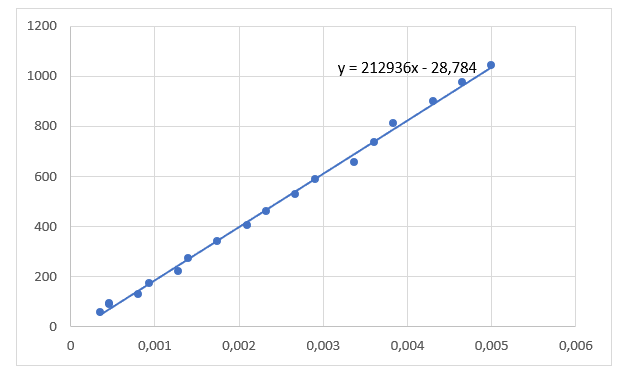
[/caption]
The results obtained were compared with the ASTM and SAE tables for mechanically used steels and indicate that the material has properties related to AISIN 4340 steel, standardized according to the elastic resistance found being approximately 212GPa. AISI 4340 steel is a material bonded to chromium and molybdenum, has good mechanical strength, medium machinability, low weldability and high temperability. This material is often used in mechanical components, usually under the action of dynamic stresses and used for the manufacture of parts in the automotive industry and in the oil and shipbuilding industry (KUPKA, 2009). This material is classified as a low alloy steel with medium carbon, presenting high tenacity and high strength (ARAÚJO MORALES, 2017).
FINAL CONSIDERATIONS
The research sought to emphasize that the formulas used are based on Hooke’s Law for the elastic regime because it does not know exact data of each screw, because the structural properties of metals or materials are specific, their properties vary among manufacturers and, also, due to the industrial secrecy of each automaker, we do not get exact data of each screw. We used the properties of 6150 steel for zafira car screws and the 4340 steel standardized for the screws of the other cars due to the characteristics presented during the study. After data analysis, each screw that presented different displacements from the real to the software was verified.
From the experiments, we obtained the percentage results of the Real vs SolidWorks Differential of Marea type 1, which was 1.65%, the Marea type 2 that totaled 0.79%, pajero which was 0.68%, Zafira which totaled 1.31% and Palio which resulted in 0.16%. The data obtained were analyzed through manual simulation, Solidworks2019 software, laboratory test, Excel aid and a wide literature research was carried out. It was verified that both results converge to a mathematical approximation between the computational methods of finite element analysis and the manual calculation of the elasticity and plasticity of automotive head screws.
REFERENCES
ARAÚJO, T. V. G. P. Sistema Embarcado para Monitoramento de Particulados de Carbono em Emissões de Motores do Ciclo Diesel. 2007. 96f. Dissertação (Mestrado em Engenharia Elétrica) – Universidade Federal de Campina Grande, Campina Grande, 2007.
BLOG LUZ. Materiais. Disponível em: http://materiais.gelsonluz.com. Acesso em: 18 nov. 2019.
BLOG. O Mecânico. Disponível em: http://omecanico.com.br. Acesso em: 19 nov. 2019.
BLOG. Roman, Aços. Disponível em: http://aco.com.br/. Acesso em: 19 nov. 2019.
CAMPOS, C. I de.; LAHR, F. A. R. Estudo comparativo dos resultados de ensaio de tração perpendicular para MDF produzido em laboratório com fibras de pinus e de eucalipto utilizando uréia-formaldeído. Matéria, v. 9, n. 1, p. 32-42, 2004.
COURTES, R. A. et al. O comportamento mecânico dos parafusos de fixação de cabeçote dos motores VW AP quando reutilizados. In: Salão Internacional de Ensino, Pesquisa e Extensão, 2017.
FERNANDEZ, B. O. Considerações sobre outros empregos do sensor de detonação para o controle eletrônico de motores ciclo Otto utilizando análise espacial. 2006. 146f. Dissertação (Mestrado em Engenharia) – Universidade de São Paulo, São Carlos, 2006.
FIORESE, D. A. et al. Desempenho de três tratores agrícolas em ensaios de tração. Journal of Neotropical Agriculture, v. 2, n. 2, p. 68-76, 2015.
GARCIA, R. Conceitos gerais sobre torque e processos de torque – Parte I. São Paulo: Revista do Parafuso, 2008.
LA CAVA, C. A. P. L. et al. Modelagem de um dispositivo de pré-carga com memória de forma para juntas flangeadas. In: Congresso Nacional de Engenharia Mecânica (CD-ROM), 2000.
MONTEIRO, C. A. M. Medição indireta de torque e velocidade angular de motor de corrente contínua sem escovas. 2016. 150f. Dissertação (Mestrado em Engenharia Mecânica) – Universidade Federal de Santa Catarina, Florianópolis, 2016.
NORTON, R. Projeto de máquinas: uma abordagem integrada. 4ª ed. Porto Alegre: Bookman, 2013.
PORTO, I. G. Interferências tribológicas na união do cabeçote associados à vedação e seus efeitos no processo de aperto da junta aparafusada. 2017. 69 f. Dissertação (Mestrado em Engenharia Automotiva) – Universidade de São Paulo, São Paulo, 2017.
SCHWONBACH, E. R. et al. Pré-carga de parafuso com tratamento de superfície Diamond-like carbon: prevenção do desaperto. RGO, v. 56, n. 1, p. 93-96, 2008.
SILVEIRA, F. L. da. Máquinas térmicas à combustão interna de Otto e de Diesel. In: Instituto de Física da Universidade Federal do Rio Grande do Sul, 2008.
SOLIDWORKS 3D design de Software. Versão 2016 x64 Edition SP0.
[1] Bachelor’s degree in Mechanical Engineering from UDF – University Center of the Federal District.
Sent: January, 2020.
Approved: June, 2020.


